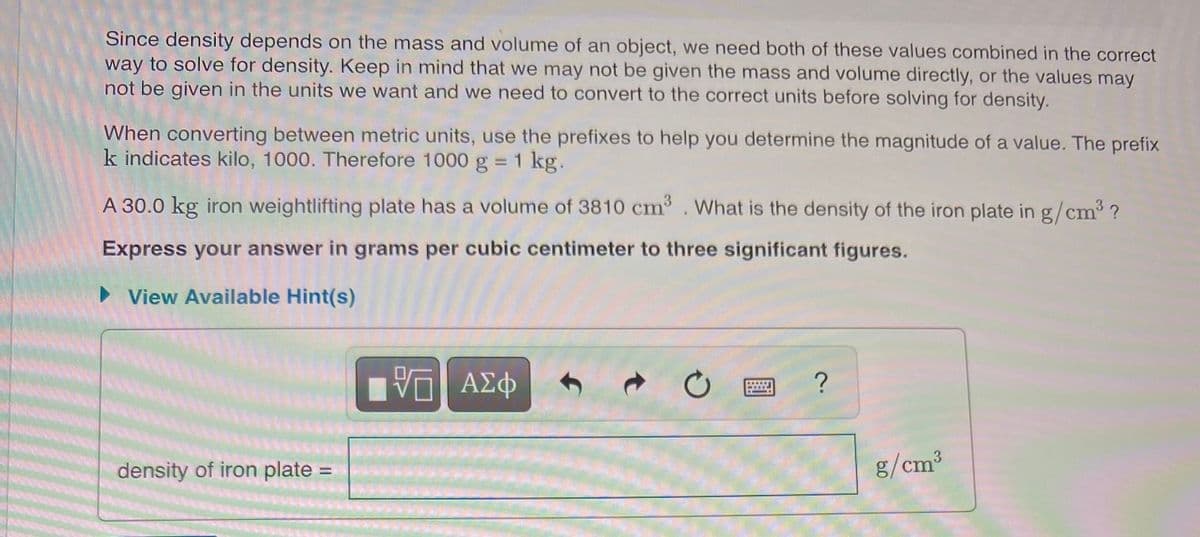Since density depends on the mass and volume of an object, we need both of these values combined in the correct way to solve for density. Keep in mind that we may not be given the mass and volume directly, or the values may not be given in the units we want and we need to convert to the correct units before solving for density. When converting between metric units, use the prefixes to help you determine the magnitude of a value. The prefix k indicates kilo, 1000. Therefore 1000 g =1 kg. A 30.0 kg iron weightlifting plate has a volume of 3810 cm. What is the density of the iron plate in g/cm³ ? Express your answer in grams per cubic centimeter to three significant figures. • View Available Hint(s) να ΑΣφ density of iron plate = g/cm
States of Matter
The substance that constitutes everything in the universe is known as matter. Matter comprises atoms which in turn are composed of electrons, protons, and neutrons. Different atoms combine together to give rise to molecules that act as a foundation for all kinds of substances. There are five states of matter based on their energies of attraction, namely solid, liquid, gases, plasma, and BEC (Bose-Einstein condensates).
Chemical Reactions and Equations
When a chemical species is transformed into another chemical species it is said to have undergone a chemical reaction. It consists of breaking existing bonds and forming new bonds by changing the position of electrons. These reactions are best explained using a chemical equation.

Trending now
This is a popular solution!
Step by step
Solved in 2 steps









